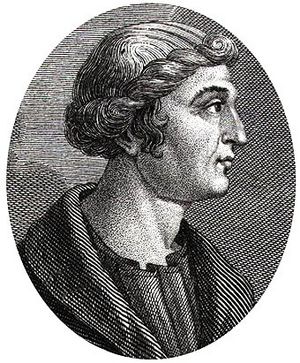Cassius Dio facts for kids
Quick facts for kids
Lucius Cassius Dio
|
|
|---|---|

17th century illustration of Dio
|
|
| Native name |
Δίων Κάσσιος
|
| Born | c. 155 AD Nicaea, Bithynia (now İznik, Turkey) |
| Died | c. 235 AD (aged approximately 80) Bithynia (now Northern Anatolia, Anatolia, Turkey) |
| Occupation | Historian, senator, proconsul, consul |
| Nationality | Roman |
| Subject | History |
| Notable works | History of Rome |
| Relatives | Cassius Apronianus (father), Cassius Dio (grandchild or great-grandchild) |
Lucius Cassius Dio (around 155–235 AD), also known as Dio Cassius, was an important Roman historian and a member of the Roman Senate. He wrote 80 books about the history of ancient Rome. His huge work started with the legendary arrival of Aeneas in Italy. It then covered the founding of Rome (753 BC), the start of the Roman Republic (509 BC), and the creation of the Roman Empire (27 BC). His history continued all the way up to 229 AD.
Dio wrote his books in Ancient Greek over 22 years. His work covers about 1,000 years of history! Many of his 80 books are still around today, either complete or in pieces. They give us a detailed look at Roman history.
Biography
Lucius Cassius Dio was born and grew up in Nicaea, a city in Bithynia (which is now part of Turkey). His father, Cassius Apronianus, was a Roman senator. Even though Dio was a Roman citizen, he chose to write his books in Greek. He always loved his hometown of Nicaea, calling it "my home."
For most of his life, Dio worked in public service for the Roman Empire. He was a senator when Commodus was emperor. Later, he became a governor in Smyrna after the death of Septimius Severus. Around 205 AD, he became a suffect consul, which was a high-ranking political position.
Dio also served as a governor (called a proconsul) in the Roman provinces of Africa and Pannonia. Emperor Severus Alexander thought very highly of Dio. He even made Dio consul a second time! After his second time as consul, when he was older, Dio went back to his home country. He died there eventually.
Dio was either the grandfather or great-grandfather of another important person named Cassius Dio, who was also a consul in 291 AD.
Roman History
Dio published his famous work, Roman History, in 80 books. He spent 22 years researching and writing it! These books cover a huge period of about 1,400 years. They start with the old stories of Roman mythology, like the arrival of the legendary Aeneas in Italy (around 1200 BC). They also tell about the founding of Rome by Romulus (753 BC).
His history then moves through the real events of the Roman Republic and Roman Empire up to 229 AD. Dio's work is one of only three Roman writings that tell us about the British revolt led by Boudica in 60–61 AD. For the earliest times, Dio gives a quick summary of events. But for later periods, his stories become much more detailed.
Not all of Dio's Roman History has survived completely. The version we have today is made up of different parts. Some parts are complete, while others are just fragments or summaries written by later historians.
For a long time, some people thought Dio's work wasn't very accurate. However, more recently, experts have looked at his work again. They now see that his writing is very complex and offers smart political and historical ideas.
How we have the books today
The first 21 books of Dio's history are mostly known from pieces found in other writings. Also, a historian named Joannes Zonaras used Dio's work as a main source for his own history, which helps us understand what was in those early books.
Books 36 through 54 are almost all complete. They cover the period from 65 BC to 12 BC. This includes important events like the campaigns of Pompey and the death of Mithridates. Books 56 through 60 are also complete. They cover events from 9 AD to 54 AD, including the defeat of Varus in Germany and the death of Claudius.
For the last 20 books (from book 61 to 80), we mostly have fragments and a short summary made by an 11th-century monk named John Xiphilinus. The very last book covers the years from 222 to 229 AD, which was the first part of the reign of Alexander Severus.
Literary style
Dio tried to write in a style similar to the famous Greek historian Thucydides. His writing is usually clear, even though it sometimes uses Latin words or phrases. What makes Dio's work special is that he often saw important events of the Roman Empire firsthand. He also knew many of the key people involved. This personal experience made his historical accounts very valuable.
See also
 In Spanish: Dion Casio para niños
In Spanish: Dion Casio para niños 
- Tacitus
- Severan dynasty
- Herodian
- Roman historiography

